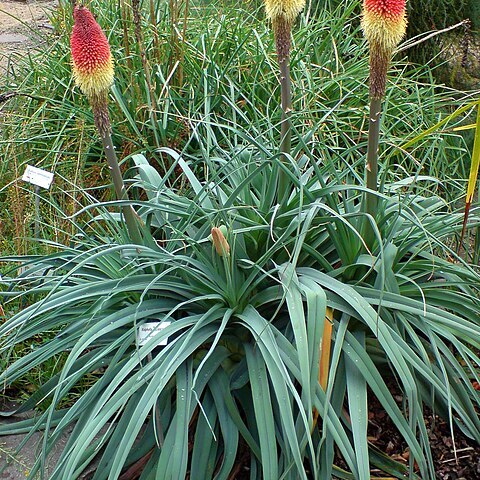Perennial herb. Stems several, simple or sparsely branched, up to 0.6 m high. Leaves erect or recurved towards apex, 0.45-0.70 m long, 25-50 mm wide, V-shaped in cross section, margins and keel distinctly and finely serrulate. Inflorescence overtopping or subequal to leaves, 0.3-0.6 m high, with oblong to cylindric, very dense raceme. Flowers coral-pink to flame-coloured and spreading in bud, pale greenish yellow to creamy yellow and spreading to pendulous when mature, 22-24 mm long. Flowering time Jan.-Mar.
Perennial herb; caulescent. Stems several, simple or sparsely branched, up to 0.6 m long. Leaves with blade erect or recurved towards apex, 450-700 x 25-50 mm, V-shaped in cross section; margins and keel distinctly finely serrulate. Flowers: inflorescence overtopping or subequal to leaves, 0.3-0.6 m high, raceme oblong to cylindrical, very dense; perianth 22-24 mm long, coral-pink to flame-coloured and spreading in bud, pale greenish yellow to creamy yellow and spreading to pendulous when mature; Jan.-Mar.

